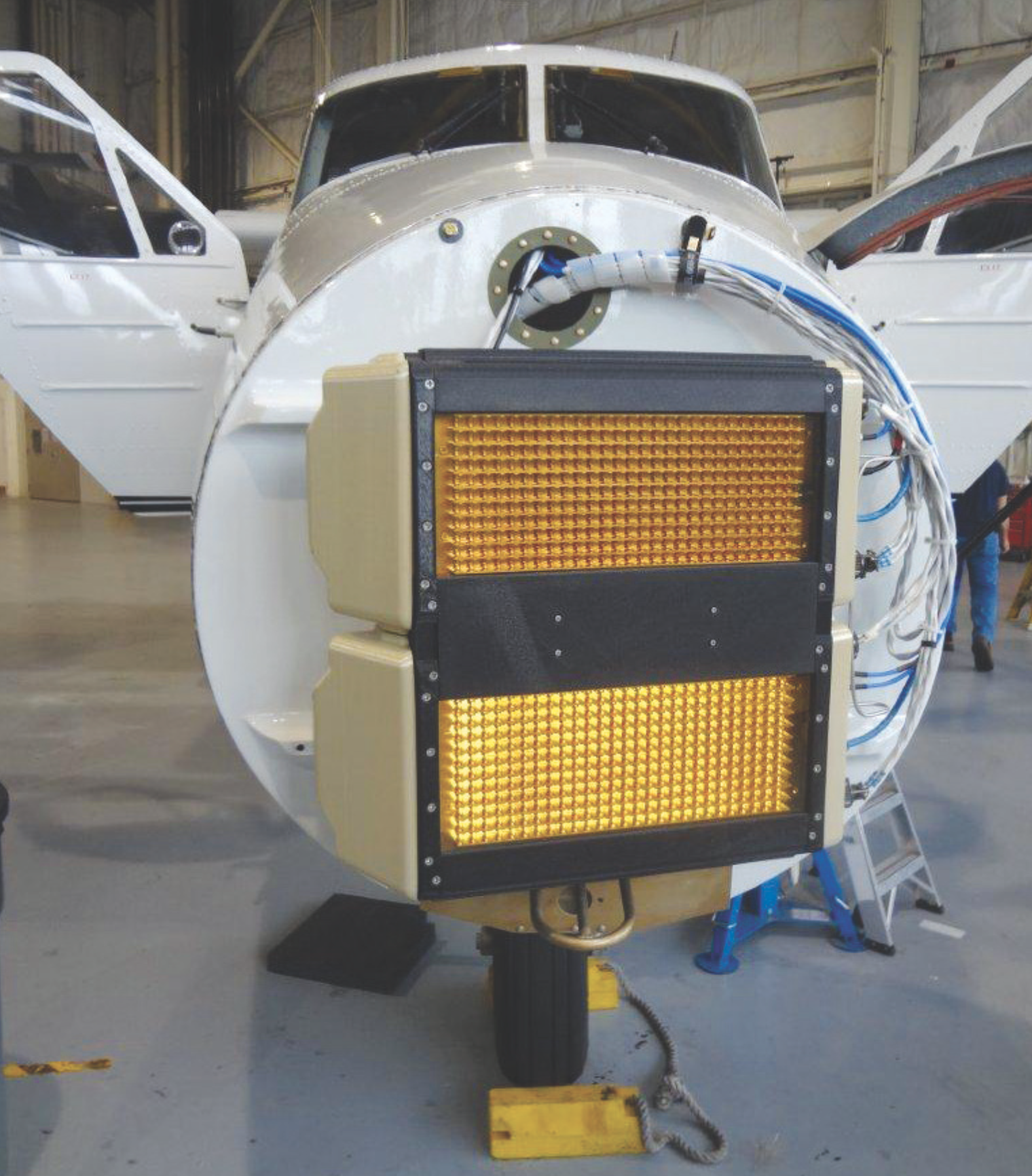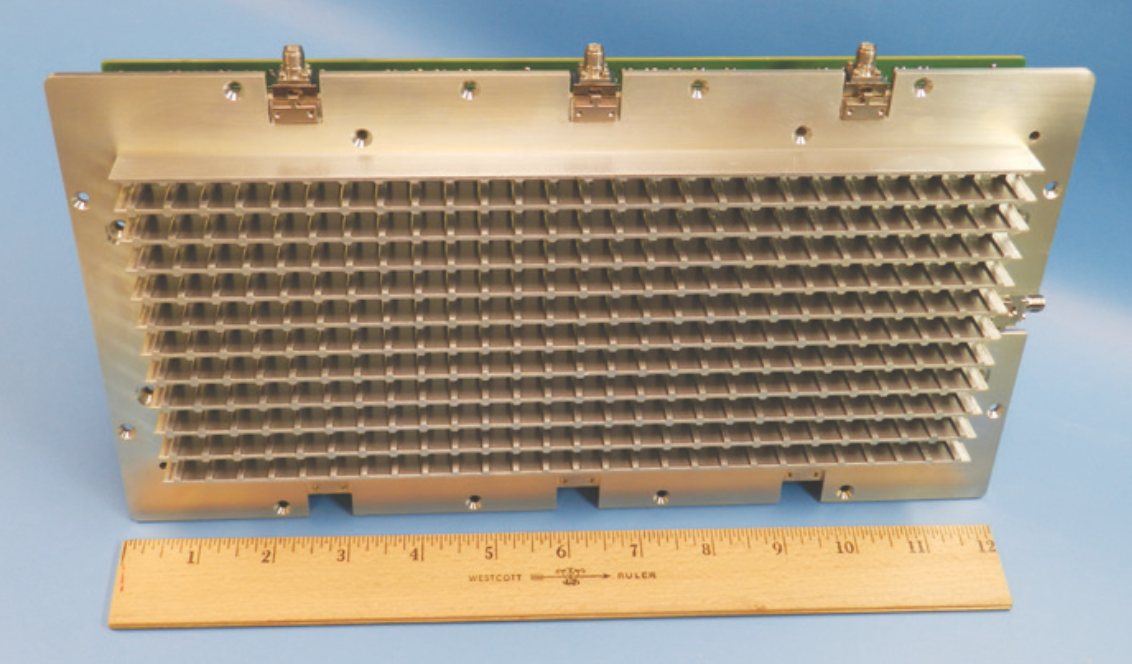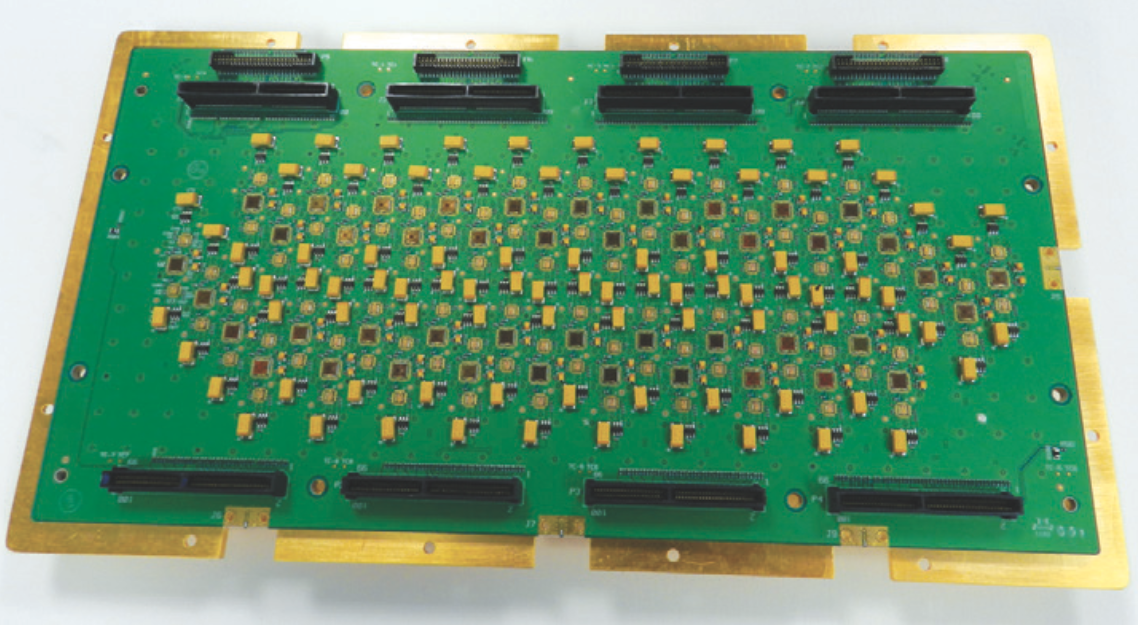Tech notes
Airborne Sense and Avoid Radar Panel
An antenna designed for sense-and-avoid systems for unmanned aircraft may not only help open the national airspace to unmanned air vehicles but also transform the design of wide-bandwidth radar systems.
 The Airborne Sense and Avoid Radar Panel is seen during installation on a Twin Otter aircraft.
The Airborne Sense and Avoid Radar Panel is seen during installation on a Twin Otter aircraft.Although unmanned aerial systems (UAS) have proven increasingly useful in a variety of applications—disaster response operations, land and crop surveys, aerial photography, and critical infrastructure protection—their widespread usage within the National Airspace System is limited because of regulatory restrictions on their access to shared airspace.
A key prerequisite for routine airspace access is compliance with the Federal Aviation Administration's (FAA) requirement for aircraft to see and avoid other air traffic. For a UAS, one means of compliance is the ability to sense and avoid via onboard or ground-based sensors and algorithms. Such a sense-and-avoid system must be able to detect aircraft posing a risk to the UAS, assess that risk, and when required, maneuver the UAS to maintain the required separation between air vehicles.
Meeting the FAA's sense-and-avoid requirement in all-weather and day or night conditions naturally points to a radar solution. Also, an onboard radar sensor is the only solution for delivering a wide-area sense-and-avoid capability, which is unachievable by ground-based systems that simply provide coordination among piloted and unmanned aircraft within limited geographic regions and air spaces.
The Airborne Solution
The Airborne Sense and Avoid (ABSAA) Radar Panel, a highly capable phased array antenna developed by MIT Lincoln Laboratory, has the potential to facilitate the introduction of UASs into the national airspace. This unique, light-weight sensor enables an onboard sense-and-avoid system that performs quick and repeatable scanning of the search region, meets the exacting surveillance timeline demanded of a sense-and-avoid system, and is reliable. The ABSAA panel satisfies the constrained size, weight, and power requirements for small platforms such as UASs. Additionally, the panel supports both aircraft detecting and weather sensing modes in a single multifunction aperture.
 The stepped-notch antenna array is a type of flared-notch antenna that uses linear steps, in this case three different notch widths, to provide wide bandwidth antenna matching and also ease of manufacture.
The stepped-notch antenna array is a type of flared-notch antenna that uses linear steps, in this case three different notch widths, to provide wide bandwidth antenna matching and also ease of manufacture.The ABSAA stepped-notch antenna panel was designed for use on mid- to large-sized unmanned aircraft that would nominally carry three separate ABSAA arrays to cover a total of 220° in azimuth and 30° in elevation with scanning rates sufficiently high to enable the sense-and-avoid system to revisit targets of interest and to maneuver the UAS safely away from other airborne traffic. However, the ABSAA panel is also admirably suited for many radar systems integrated on small platforms. Because the stepped-notch antenna can be manufactured at an order-of-magnitude reduction in cost compared to the cost for fabricating a curved antenna, is lightweight and reliable, and operates over a wide bandwidth, the ABSAA radar panel could substantially change the design of phased array panels used in many types of systems.
Panel Design
The ABSAA panel radiates and collects radar pulses and processes the range and velocity of targets over a wide angular region in front of and around its host platform, for example, a UAS. Collision avoidance logic uses the radar information and knowledge of the UAS to decide if separation maneuvers are required. The ABSAA phased array antenna is able to electronically scan a high-power narrow antenna beam over a wide field of view, allowing for fast revisit rates of targets of interest to the UAS. The panel, operating at Ku-band (13–17 GHz), enables a narrow antenna beamwidth while maintaining a small physical size.
Each ABSAA panel has 192 antenna elements, each of which has a separate radiator and transmit or receive (T/R) module that amplifies the radar signal and controls the phase of the signal relative to the other elements of the panel. The active phase and amplitude control at the element level of an array provides the ability to electronically steer the direction of radar signals transmitted from and received by the aperture. Power amplifiers at every element on the transmit array, in conjunction with the phase shifter, provide signal gain such that high-power emissions are combined and cohered in a certain direction. The receive array elements use a low-noise amplifier in combination with the phase shifter to enable detection of the very small signals that return off the air targets. A beamforming network coherently distributes the signals to the individual elements on transmit and coherently combines the energy on receive.
 The aperture's printed circuit board incorporates the feed to the stepped-notch antenna elements, the antenna feed network, the array beamforming networks, the DC power distribution network, and the control signal distribution network. It is mounted directly to the backside of the stepped-notch antenna and is fed via a backplane electronics board that provides power conditioning and control signals. The T/R modules are surface-mounted onto the aperture board.
The aperture's printed circuit board incorporates the feed to the stepped-notch antenna elements, the antenna feed network, the array beamforming networks, the DC power distribution network, and the control signal distribution network. It is mounted directly to the backside of the stepped-notch antenna and is fed via a backplane electronics board that provides power conditioning and control signals. The T/R modules are surface-mounted onto the aperture board.Innovative Features
Several unique capabilities integrated into the ABSAA panel significantly reduce the complexity and cost of these electronically scanned arrays:
- The thermal cooling of the array electronics is incorporated into the antenna system. The elimination of a separate cooling assembly leads to fewer opportunities for system failure and to reduced manufacturing costs.
- Multifunction radio-frequency integrated circuits (RFIC) developed for the ABSAA panel enable state-of-the-art performance by providing two independent channels for the amplification, the phase shift control, and the interface and control for the electronically scanned array. The RFICs's compact size (0.09 cm2 each) and the use of a commercial, high-volume foundry process to integrate components on the circuits also substantially reduce manufacturing costs.
- By fully integrating the RFICs, high-power amplifier, and low-noise amplifier into the aperture's printed circuit board, the traditional T/R module is removed from the array, thus reducing its complexity and eliminating assembly and test steps.
Future Directions
The novel, lightweight, low-cost Airborne Sense and Avoid Radar Panel could fundamentally change the ways in which high-performance, wide-bandwidth radar systems are designed. The panel also may become the critical enabler for future onboard airborne sense-and-avoid systems that will facilitate the expansion of UAS usage into a broad range of applications—for example, security and disaster response efforts, communications, aerial mapping projects, and aerial surveillance—that could take advantage of the relatively low cost of UASs and their agility in flying into remote or space-constrained places.
The FAA requirements for sense-and-avoid systems have not yet been finalized. The operating standards, which are generally based on a target level of safety, will drive the sensor-level requirements. The ABSAA panel may provide both inputs into these requirements and a path to a low-cost sensor for airborne sense-and-avoid systems.
Posted October 2014
top of page